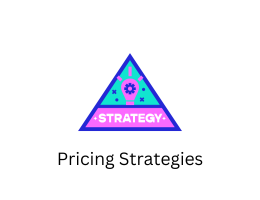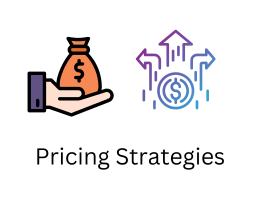
Dynamic Pricing Strategies
- By admin --
- Friday, 11 Aug, 2023
Dynamic pricing, often referred to as surge pricing, demand pricing, or time-based pricing, is a pricing strategy that involves adjusting the price of a product or service in real-time based on various factors such as demand, supply, competition, and customer behavior. This strategy has gained significant traction in recent years, particularly in industries such as e-commerce, transportation, hospitality, and entertainment. The primary goal of dynamic pricing is to optimize revenue by finding the right balance between price and demand elasticity.
The concept of dynamic pricing isn't entirely new; it has roots in traditional economic principles like supply and demand. However, with advancements in technology and access to real-time data, businesses now have the tools to implement dynamic pricing strategies with greater precision and effectiveness.
Key Factors Influencing Dynamic Pricing:
-
Demand Fluctuations: One of the fundamental drivers of dynamic pricing is changes in demand. During peak demand periods, prices are often raised to capitalize on consumers' willingness to pay more for immediate access to a product or service. For instance, airlines adjust ticket prices closer to the departure date, while ride-sharing platforms increase fares during busy hours.
-
Competitor Pricing: Monitoring competitors' pricing strategies is essential for businesses employing dynamic pricing. If a competitor lowers their prices, a company might respond by reducing its own prices or offering promotions to maintain its market share.
-
Time of Day and Seasonality: Businesses often experience variations in demand based on the time of day, day of the week, or season. Dynamic pricing allows them to set different price levels to reflect these fluctuations. Hotels, for example, might charge more during peak vacation seasons.
-
Inventory Levels: For businesses with limited inventory, such as event tickets or hotel rooms, dynamic pricing helps optimize revenue by ensuring that every unit is sold at the optimal price. Prices may rise as inventory decreases, creating a sense of urgency for potential buyers.
-
Customer Segmentation: Dynamic pricing is also tailored to specific customer segments. Businesses can offer different prices based on factors like loyalty status, purchase history, and geographic location. This personalization enhances the customer experience and improves the chances of conversion.
Advantages of Dynamic Pricing:
-
Maximized Revenue: The primary advantage of dynamic pricing is its potential to increase revenue. By adjusting prices to match demand, businesses can capture additional value from customers who are willing to pay more for convenience or urgency.
-
Responsive to Market Changes: Dynamic pricing enables businesses to quickly respond to shifts in market conditions, such as unexpected changes in demand due to external factors like weather events or economic trends.
-
Optimized Inventory Management: Companies with perishable or time-sensitive inventory can optimize their sales by adjusting prices dynamically to prevent overstocking or understocking.
-
Competitive Advantage: When executed effectively, dynamic pricing can provide a competitive edge by attracting price-sensitive customers while still capitalizing on those willing to pay a premium.
Challenges and Considerations:
-
Customer Perception: Implementing dynamic pricing requires careful consideration of how customers will perceive the changes. Rapid and frequent price adjustments can lead to customer skepticism or frustration.
-
Ethical Concerns: Striking a balance between revenue optimization and fairness can be challenging. Overly aggressive dynamic pricing might be viewed as exploiting customers during urgent situations.
-
Data Accuracy and Analysis: Effective dynamic pricing relies on accurate and up-to-date data. Businesses need robust data analytics systems to make informed pricing decisions.
-
Competitor Response: Aggressive dynamic pricing might trigger a price war if competitors respond by undercutting prices. Businesses need to anticipate and mitigate such scenarios.
Conclusion:
Dynamic pricing is a dynamic and complex strategy that requires a deep understanding of market dynamics, customer behavior, and data analytics. When implemented thoughtfully, it can lead to increased revenue and improved customer satisfaction. However, businesses must carefully consider ethical implications and customer perceptions to maintain a positive brand image. As technology continues to advance, dynamic pricing will likely remain a crucial tool for revenue optimization across various industries.





